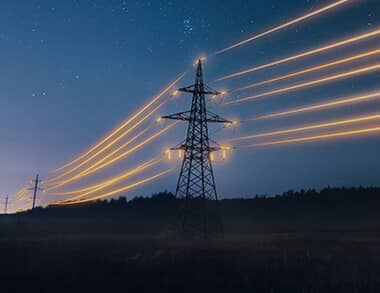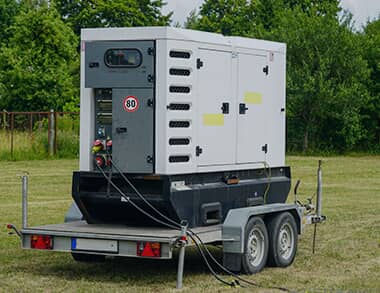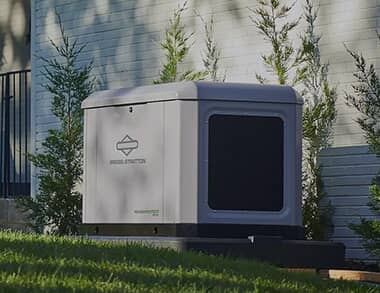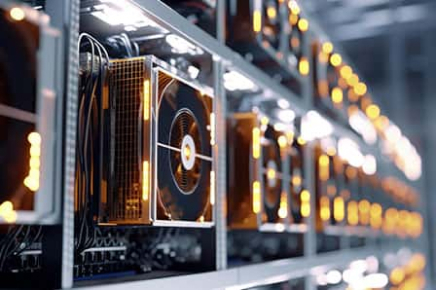Pitfalls to Avoid When Setting Up Temporary Power

Temporary power is critical for many outdoor and indoor settings. Temporary power can also be live saving in an emergency, depending on where it is set up. As a result, it’s vital that temporary power set ups avoid common pitfalls that can lead to malfunctions at best, or at worst, outright failure of the temporary power system.
Failing to Properly Size the Generator
Failure to get a generator of the proper size for the application that it’s intended to be used for is one of the most common pitfalls when setting up a temporary power system. A generator that is too small won’t be able to power all the equipment that needs to be used, leading to power outages and delays. Likewise, if it’s too large, then it will simply be inefficient – producing far more power than needs to be used, leading to costly and unnecessary fuel consumption. By carefully considering the power needs of the site, you can easily avoid this common pitfall from the outset.
Not Considering Environmental Factors
The environment should also be a careful consideration when selecting the generator that you’ll be using for temporary power. If you intend on using it for outdoor events, then the generator will be potentially exposed to the elements. Wind, rain, cold, and extreme heat can all rapidly destroy the internal mechanisms of a generator that were not designed for those conditions or has been placed in a less than ideal location. Generator design and placement should be careful considerations – even a generator that has been designed for outdoor use should be placed in a location that is protected from the elements.
Not Having a Backup Plan
Temporary power systems can fail for a variety of reasons, including equipment failure, power outages, and weather events. It's important to have a backup plan in place in case of a power failure. This could include backup generators, battery-powered equipment, or contingency plans for rescheduling events or work.
Improper Wiring
Another common pitfall when setting up temporary power is improper wiring. Wiring that is not installed correctly can lead to power outages, electrical shocks, and even fires. All wiring should be installed by a licensed electrician and should comply with all local building codes. A certified power generation expert should be utilized when setting up temporary power generation systems to avoid issues with improper wiring.
Failing to Plan for Noise and Emissions
A common pitfall of temporary systems is a failure to consider the noise and fumes that a generator or other power generation system can produce. Choosing equipment that is designed to reduce noise and emissions or placing that equipment in places where they won’t be harmful to workers, is a great means of avoiding this pitfall.
Overloading Circuits
Overloading circuits can lead to power outages and equipment failure. It's important to ensure that circuits are properly sized and that the load is evenly distributed across the circuits. A certified power generation expert can help you to determine whether your generator and existing circuitry are compatible.
At GenTech, our certified power generation experts have decades of experience in setting up safe and effective temporary power generation systems. Contact our team today for a free consultation and find out how we can help you meet your temporary or outdoor generator needs!
Failing to Properly Size the Generator
Failure to get a generator of the proper size for the application that it’s intended to be used for is one of the most common pitfalls when setting up a temporary power system. A generator that is too small won’t be able to power all the equipment that needs to be used, leading to power outages and delays. Likewise, if it’s too large, then it will simply be inefficient – producing far more power than needs to be used, leading to costly and unnecessary fuel consumption. By carefully considering the power needs of the site, you can easily avoid this common pitfall from the outset.
Not Considering Environmental Factors
The environment should also be a careful consideration when selecting the generator that you’ll be using for temporary power. If you intend on using it for outdoor events, then the generator will be potentially exposed to the elements. Wind, rain, cold, and extreme heat can all rapidly destroy the internal mechanisms of a generator that were not designed for those conditions or has been placed in a less than ideal location. Generator design and placement should be careful considerations – even a generator that has been designed for outdoor use should be placed in a location that is protected from the elements.
Not Having a Backup Plan
Temporary power systems can fail for a variety of reasons, including equipment failure, power outages, and weather events. It's important to have a backup plan in place in case of a power failure. This could include backup generators, battery-powered equipment, or contingency plans for rescheduling events or work.
Improper Wiring
Another common pitfall when setting up temporary power is improper wiring. Wiring that is not installed correctly can lead to power outages, electrical shocks, and even fires. All wiring should be installed by a licensed electrician and should comply with all local building codes. A certified power generation expert should be utilized when setting up temporary power generation systems to avoid issues with improper wiring.
Failing to Plan for Noise and Emissions
A common pitfall of temporary systems is a failure to consider the noise and fumes that a generator or other power generation system can produce. Choosing equipment that is designed to reduce noise and emissions or placing that equipment in places where they won’t be harmful to workers, is a great means of avoiding this pitfall.
Overloading Circuits
Overloading circuits can lead to power outages and equipment failure. It's important to ensure that circuits are properly sized and that the load is evenly distributed across the circuits. A certified power generation expert can help you to determine whether your generator and existing circuitry are compatible.
At GenTech, our certified power generation experts have decades of experience in setting up safe and effective temporary power generation systems. Contact our team today for a free consultation and find out how we can help you meet your temporary or outdoor generator needs!
Topics:
From Insights to Power: Let’s Talk Solutions
Whether you need emergency power, maintenance, or expert guidance on your generator system, Gen-Tech has you covered. Our experienced team provides industry-leading service to keep your power running when it matters most. Call (800) 625-8324 to discuss your power generation needs today!
Contact Us













